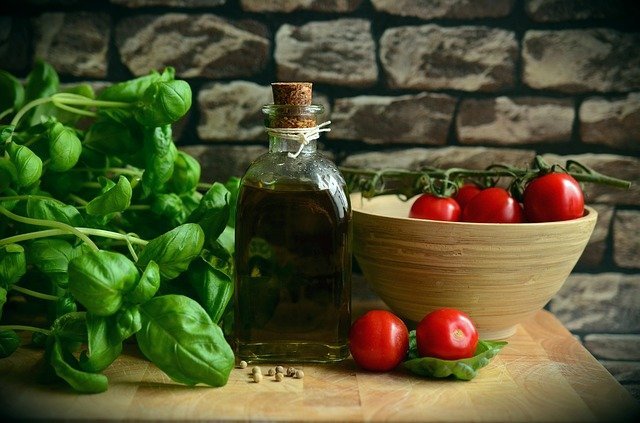
Vegetable oils
Vegetable oils are fats present in plants that usually have liquid form; the color varies from transparent, to yellowish to colors on green, red and brown, depending on the type of oil extracted. The part of the plant that contains them is not always the same, in fact we can find them for example in the seeds, fruits, flowers, leaves, roots and rhizome (underground stem).
Composition
Vegetable oils are lipids, that is, fats and for the most part are triglycerides that float on water. Vegetable oils are fat-soluble, that is, soluble in organic solvents and little or not at all soluble in water. In extractions this characteristic allows to bring the principles and oily substances out of the plant using a lipid extractive solvent by maceration in contact immersion.
In addition to triglycerides, vegetable oils have hydrophobic components that therefore give a polar characteristics to the compound. For example in essential oils we have terpenes such as menthol in mint essential oil. And again we find the presence of flavonoids, carotenoids, esters and other components that create the complexity and variety of vegetable oils, each particular and useful with its specific properties and characteristics.
Uses of vegetable oils
- feeding
- cosmetics
- energy-fuels (lighting and cooking using oil as fuel)
- agriculture
- herbal medicine and aromatherapy with essential oils
In the food field, vegetable oils are very present both directly as seasoning oils to prepare and season dishes and also in packaged processing products; in this last case there are many procedures of chemical transformation of vegetable oil that can be processed, hydrogenated, trans-esterified and fractionated as in the preparation of margarines.
Extraction methods of vegetable oils
- For cold pressing: using mechanical machinery it is possible to squeeze some plants or parts of them to obtain vegetable oil. For example olive oil from the fruit of the olive tree or seed oil from the seeds of various plants rich in vegetable oils. This is the oldest method that gets a high-quality product when pressed or cold pressed without the use of synthetic chemical solvents.
- Extraction with organic solvents: takes place by contact and immersion of the plant or parts of it that contain the vegetable oil in an organic solvent (other vegetable oil, other types of lipids or solvents such as alcohol). It takes a precise contact time to allow the extraction to take place and sometimes it is necessary to help the extraction with the addition of heat. For example, Hypericum oil is obtained by immersing in olive or sunflower oil the aerial parts of flowers and leaves of the Hypericum plant; then it is left for 40 days immersed in the extraction oil and left in the sun to administer a little heat. Finally, it is filtered and packaged for use against burns and skin irritations (external use – attention: it is photosensitizing). These extractions can take place with chemically synthesized solvents to obtain vegetable oils in greater quantities being more efficient and at a lower cost; the problem that may arise is that a part of the chemical solvent may remain in the extracted vegetable oil.
- Steam distillation: it is used for plants that contain particular scented oils called essential oils. This extraction process is exclusive to obtain essential oils and aromatic waters (hydrolate) and is carried out through the heating of the water that evaporates when boiling, bringing with it the volatile part of the aromatic plant in contact; then the water vapor is cooled, which it condenses by stratifying into essential oil and aromatic water.
Preservation
Vegetable oils being lipids should be stored away from light, at room temperature (in some cases refrigeration is needed) and in closed containers to have as little contact as possible with the air. All this serves to avoid the rancidity of the oil, that is, the process of oxidation and transformation of lipids that leads to their deterioration.
Quality and advice
The method of cultivation, the time of harvest of the plant or part of it, the chosen extraction method and the method of storage are the indices for choosing the quality of a good vegetable oil.
For vegetable oils used in the kitchen for the preparation of food, it is recommended to remain under certain temperatures and to limit cooking times since the linoleic acid present is transformed into a toxic substance that passes into foods, especially fried ones. Some vegetable oils produce at high temperatures substances that are harmful and toxic to the body so I advise you to use them as much as possible raw.
It is also remembered not to disperse them in the environment and to respect their disposal process in order not to pollute the various ecosystems.






